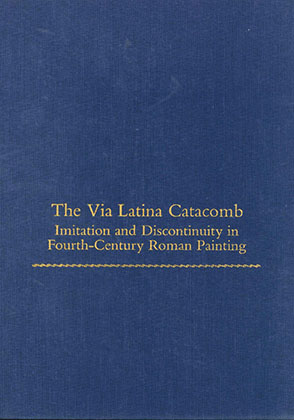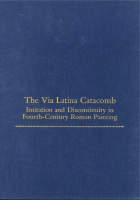
The Via Latina Catacomb
Imitation and Discontinuity in Fourth-Century Roman Painting
William Tronzo
The Via Latina Catacomb
Imitation and Discontinuity in Fourth-Century Roman Painting
William Tronzo
During the building of an apartment house on the Via Latina in Rome in 1955 a small Christian catacomb was brought to light, a chance archaeological discovery that turned out to be a startling revelation. The architectural form and painted decoration of the catacomb were much remarked—not only were they exceptionally lavish, they also proved exceedingly difficult to fit into the traditional picture of the development of Christian art in late antique Rome.
- Description
- Bio
- Subjects
The Via Latina Catacomb: Imitation and Discontinuity in Fourth-Century Roman Painting is the first in-depth study of the monument in terms of its structure and function. A single question that arises from the monument itself serves to focus the discussion: Why was the last chamber in the catacomb made as a copy of one of the first? But the question is also one that demands a comprehensive approach. Thus the catacomb is examined with regard to its construction, plan, and architectural form, as well as its style of painting and imagery.
William Tronzo is in the History of Art Department at Johns Hopkins University. He received his Ph.D. from Harvard, and has held fellowships from the American Academy in Rome, Dumbarton Oaks Center for Byzantine Studies, Harvard, and the Kress Foundation.
Mailing List
Subscribe to our mailing list and be notified about new titles, journals and catalogs.



